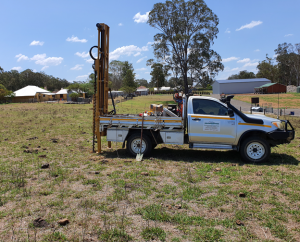Sepp 55 Prelim and Detailed Site Investigations
SEPP 55 Preliminary Site Investigations and Detailed Site Investigations – Remediation of Land
(SEPP 55 Revision – May 2020)
The latest revision to SEPP 55 occurred is from April 2020. It is a requirement of Consent Authorities for Contamination and Remediation to be considered in determining development applications. As outlined in Section 7 of SEPP 55 councils are required to consider if land is contaminated as part of many development applications – particularly for change of use to a more sensitive land use. This assessment to determine the potential for land to be contaminated is represented by a Preliminary Site Investigation (PSI) (also called a Stage 1 or Phase 1 Environmental Site Assessment Report). These SEPP 55 Preliminary Site Investigation Reports generally entail a detailed records review such as aerial photographs, council records of development and business approval records, EPA records of contamination, land titles, Safework NSW records, and often other historical searches of the site and its surrounds in relation to the potential for contamination. Clients are often confused as to why council require an assessment for contamination under SEPP 55. The most easily understood example is for a change of use to a highly sensitive receptor such as a Child Care Centre. Children are particularly susceptible to contamination due to a range of factors including contamination from putting their hands to their faces and mouth and their threshold is lower due to their smaller body sizes. Child Care Centres always require a PSI assessment and these are highly important for change of use to such a highly sensitive use such as a Child Care Centre. Anderson Environmental Pty Ltd has undertaken many SEPP 55 Assessments for Child Care Centres. For older buildings being converted into a Child Care Centre often there are a range of potential contaminants present including lead paint (which sometimes contaminates the soil on the outside of the building), asbestos in the soil from construction or previous renovations and various herbicide and pesticide contamination from historical use around the building. These represent risks to children and sometimes staff in such a situation.
Depending on the findings of a PSI sometimes a Detailed Site Investigation (or Stage 2 Contamination Assessment) is required if there are risks present of informational gaps from previous or nearby uses. Nearby uses can sometimes contaminate a site due to runoff from industrial or other manufacturing sites onto the subject site or from groundwater contamination. High risk sites occurring close to a site, (present and former/historical) such as industrial facilities, service stations, dry cleaners, manufacturing etc represent a risk and the closer the site the higher the risk. Generally, assessments of potential risks are undertaken within approximately 300 metres of the property boundary depending on the type of risk from present or former neighbouring uses. Groundwater contamination is sometimes an issue if the groundwater is contaminated by chemicals. This can occur due to leaking underground storage tanks such as from Service Stations or from a variety of other sources including Dry Cleaners and Industrial Sites. Groundwater contamination can travel a significant distance from its source and therefore a distance around the property boundary is examined to evaluate potential risks. Detailed Site Investigations (DSI) are guided by the information gathered in the Preliminary Site Investigation and involve soil and groundwater sampling depending on the Contaminants of Potential Concern. These investigations are undertaken in accordance with NSW EPA Guidelines and the Federal National Environmental Protection Measure (NEPM). The National Environment Protection (Assessment of Site Contamination) Measure 1999 (ASC NEPM) is used by environmental auditors, site assessors, landowners, developers, industry and regulators when assessing land contamination. This provides a technical and legislative framework for undertaking Detailed Site Assessments. A DSI will determine if there is contamination present on the site in relation to the proposed use and determine its extent (both laterally and horizontally) and provide information on the risk.
Anderson Environmental undertaking drilling for a site assessment
Council must also be satisfied that if the land is contaminated, that the land is suitable in its contaminated state (or will be suitable, after remediation) for the purpose for which the development is proposed to be carried out. Therefore, the results of a DSI assessment must indicate whether a Remedial Action Plan is required for the Remediation of the site so the site can be made safe for its intended use. Remedial Action Plans evaluate the risks in detail and recommend often a range of remediation options for the management and/or entire removal of the contamination from the site. Depending on the site and its intended use there are various threshold levels for the broad range of contaminants. Once a Remedial Action Plan is approved and the works carried out on the ground to remediate the site a Site Validation and Closure Report is issued outlining the works carried out to outline the remedial actions which have been undertaken for the site.
Please give us a call to discuss your requirements.
Sources:
https://www.legislation.nsw.gov.au/view/html/inforce/current/epi-1998-0520#sec.7
http://www.nepc.gov.au/


